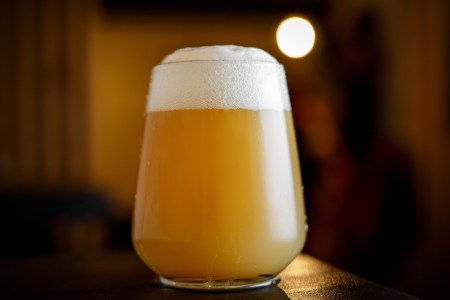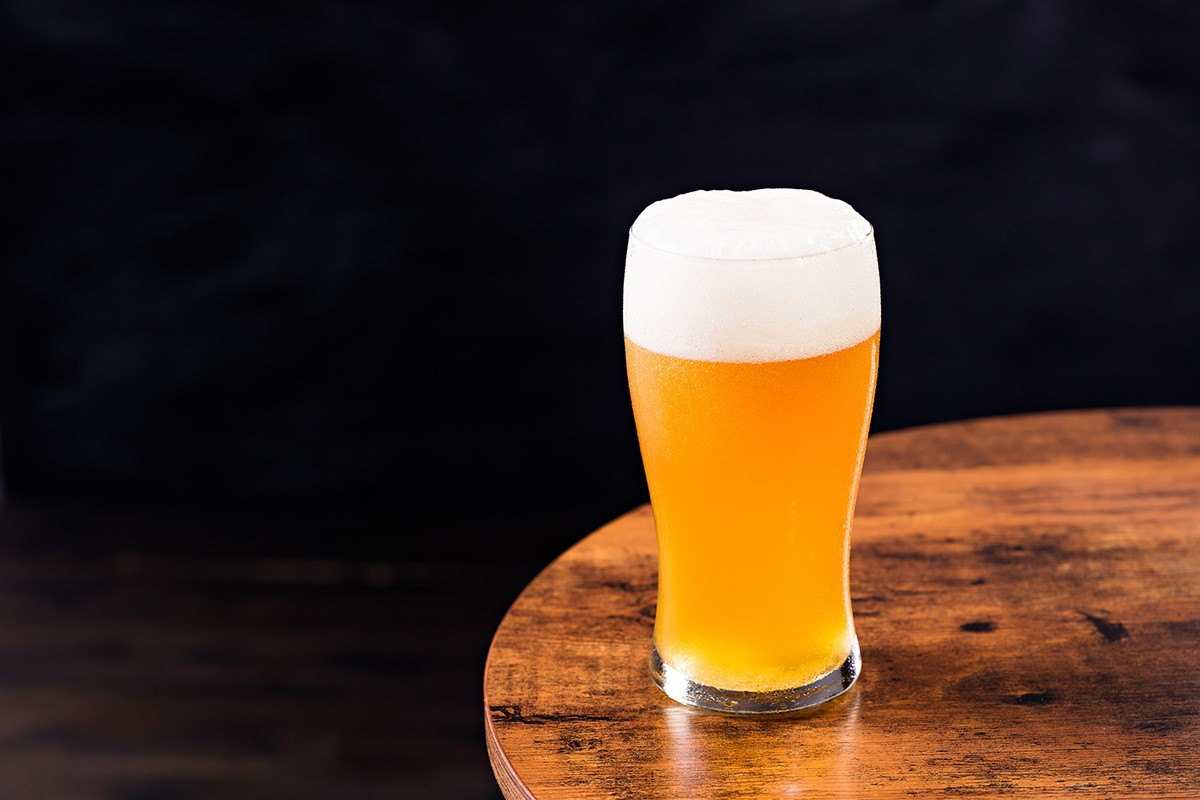When I worked in a German brewery in Perth, it was so frustrating having to hear the rejection of any beer that had the slightest amount of haze to it when you knew that what the haze brought to the beer was more than it just being pretty or not.
We used to place two glasses of Pils on the bar and ask the willing punter to tell us which one was more drinkable – the filtered or unfiltered version. Usually the unfiltered beer didn’t win, but for me it was a hands-down victory. It’s the proteins and polyphenols in beer that cause and promote haze while the brewing process and choice of ingredients will determine the extent and indeed the longevity of the haze. It’s easy to brew a hazy beer, but intentionally brewing a hazy that will stay hazy is another thing altogether!
The old versus the new
Long before modern filtration and centrifuges, most beers were hazy and it was only those that were stored for extended periods at low temperatures, such as lagers and pilsners, that would be bright and clear. A centrifuge is a piece of brewing equipment that has a conical chamber with a stack of discs inside. Beer is passed through the spinning disc stack and the haze-forming particles (yeast, trub et cetera) are spun to the outer edge at high speed and removed from the beer.
Beer going into the centrifuge can be very hazy and come out crystal clear, it all depends on what the brewer wants to achieve. Not only does this remove the haze but also introduces a very welcome level of consistency to the finished beer as you can hit the exact same numbers every time and they can dial in the amount of haze (or lack of) they want.
For me, and I’m sure it’s the same with most of you, I love and welcome the haze. Most home brews will be hazy as we don’t have the equipment (nor the patience) to remove it, so we’re kind of used to it. In Bavaria in the 1500s, when they first started brewing hazy wheat beers, it was the norm to have a hazy beer, but the Hefeweizen took it to the next level. Got to love those Germans!
Neipa
I’m a bit of a traditionalist and the New England IPA doesn’t do much for me, but due to their popularity, which has stuck for years now, something is telling me I must be in the minority! Their rise to stardom began back in the early 2000s, when John Kimmich of The Alchemist brewery in Vermont, New England decided to create an IPA that wasn’t as bitter, but had all the flavour and aroma, of a classic US IPA.
Bittering hops were removed from the brewing process and most of the hop additions were made at the end of the boil and during whirlpool. A huge amount of hops were used to achieve a decent amount of IBUs, with another huge dry hop addition later on in the maturation process. The addition of hops to beer introduces many (haze-forming) compounds and chemical reactions which cause haze, so these huge additions created a very hazy beer.
The mouthfeel of the beer was very different too. It lacked the bitterness which usually balances out any beer and because higher amounts of protein rich fermentables were used (wheat, oats) to achieve a more juicy and sweet malt profile, it resulted in a high ABV, highly hopped, but not so bitter IPA. It was aimed at a drinker who would normally be put off by the bitterness of those huge IPAs where the IBU race was on. No wonder they were coined “juicy” IPAs – not only did they look like orange juice, they tasted like it too!
As specialty hops came to the fore, with their tropical fruit characteristics of passionfruit, guava, lychee and more, the NEIPA just got juicier and juicier as they became the ultimate vehicle to showcase these new hops. But it wasn’t only the hops that were responsible for the insane amount of haze in these new IPAs as large doses of high protein fermentables were being used to increase and promote haze stability.
Wheat and flaked oats are also used to achieve haze, and if we look back to the original hazy of the 1500s, the Hefeweizen has a high amount of wheat in its malt bill, around 50 per cent. In my Brew Log in this edition, you’ll find my recipe of a good old fashioned Dunkelweizen (page 59).
Brew day
Let’s brew up a bog standard NEIPA. This is going to be the platform for what you want your NEIPA to be. What I want you to do is pick an element to it that changes it completely and what you think would work and change this boring old NEIPA up.
You could add some fruit (mango puree, strawberries) or some spice (vanilla, cocoa) and/or even some lactose to make it completely different. Imperial tropical fruit punch chocolate milkshake Belgian sour IPA anyone? You can even add some darker specialty grains but remember, one of the features of a NEIPA is seeing the haze so don’t go too dark.
If you can manipulate your brewing liquor, go ahead and aim for a soft or medium spec. Send me in your recipe and the winner will be published in a future edition. Brewing music has to be Jimi Hendrix Purple Haze. Now, go brew!
New England IPA Recipe:

All grain (expected figures)
OG: 1.068
FG: 1.015
ABV: 7.1%
IBU: 33
Volume: 20 litres
Ingredients
3.5kg Ale malt
700g Wheat malt (dark or light)
500g Munich malt (10L or 20L)
400g Flaked Wheat
350g Flaked Oats
40g Galaxy hop pellets
40g Citra hop pellets
40g Melba hop pellets
Yeast nutrient
White Labs WLP066 London
Fog yeast
Method
1. Mash in at 66°C for 60 minutes.
2. Sparge and transfer to kettle.
3. Bring to a boil, and do so for 60 minutes.
4. With 10 minutes left on the boil, add yeast nutrient.
5. Flameout and add 40g Melba hops.
6. Commence whirlpool/steep and add 40g Galaxy and 40g Citra for 20 minutes.
7. Cool wort to 18°C and run into fermenter.
8. Oxygenate or aerate and pitch yeast and maintain 18°C during fermentation.
9. On day five, dry hop with your chosen hops.
10. When FG stabilises, keg or bottle as usual.
Extract with specialty grains (expected figures)
OG: 1.068
FG: 1.015
ABV: 7.1%
IBU: 33
Volume: 20 litres
Ingredients
2.6kg Pale Ale extract
525g Wheat Malt Extract
500g Munich malt (10L or 20L)
400g Flaked Wheat
350g Flaked Oats
40g Galaxy hop pellets
40g Citra hop pellets
40g Melba hop pellets
Yeast nutrient
White Labs WLP066 London
Fog yeast
Method
1. Heat 6 litres of water in your brew pot.
2. Add cracked grain to hop or grain bag and mash for 30 minutes at 66°C.
3. Remove bag from wort and allow to drain.
4. Increase the heat and stir in half of the extract and bring to the boil.
5. With 10 mins left on the boil add yeast nutrient.
6. At 60 minutes, flameout and add 40g Melba hops.
7. Commence whirlpool/steep and add 40g Galaxy and 40g Citra for 20 minutes.
8. Place pot in an ice bath and cool wort then add into fermenter.
9. Add cool fresh filtered water up to 17 litres, checking temp constantly.
This article originally appeared in Beer & Brewer’s Summer 2022/23 Issue 63.
For all the other recipes in our continuing weekly series, head here. If you have a recipe you’d like to share with us, email Deb on djackson@intermedia.com.au.

